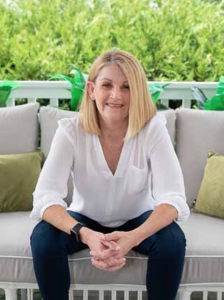 Epic Change starts with your environment. The thing is, your environment can influence your mood, behaviour, motivation, interactions with people, and stress levels.
Epic Change starts with your environment. The thing is, your environment can influence your mood, behaviour, motivation, interactions with people, and stress levels.
As Adults, we know this and we are very conscious of our environment particularly at home. So why should our classrooms be any different.
For example, a messy entry with shoes, bags, and other stuff on the floor, may invite you to drop what you are carrying right there, whereas a clean entry with adequate storage will encourage you to take the time to put the item away.
A classroom is no different to the entries of our home. When a student walks into the room, if it’s neat, tidy, and professional looking, then they are going to have a higher level of respect for the environment. If you walk into a room that is cluttered and has tables unevenly arranged and cables on the floor, then the students are not going to have as much respect.
Over the years, I have worked in classrooms that have had tables in a u-shape, tables in groups, tables around the perimeter of the room, no tables at all, bean bags instead of tables and chairs, benches and tables that are on rollers, and Ottomans. When it comes to the environment of your room, it has to suit what is going on in that room. Research studies also revealed that rooms with bright light both natural and artificial can improve depression and anxiety. So have a think about the lighting within the room and see if there’s any way that you can enhance the natural light.
If you want a flexible teaching space, you have to learn how to manage the clutter that can come from a music lesson.
In our previous session, we discussed the situational analysis. Now, you should have a very clear understanding of what is going on within your music department. One of the biggest problems with music classrooms, is that they can become quite messy very quickly. Do you agree? I am sure you are nodding your head right now aren’t you?
If you are looking at using an integrated teaching style, then students are going to be freely moving around the room, they will be collaborating in groups, and most likely using a variety of musical instruments. This can be very hard to keep an eye on and if the students are quite engaged in the learning, then they may not hear the bell. So it is incredibly important that you have a room that makes logical choices for the storage and movement of the equipment.
Just think about your classroom for a minute. Picture it! Have you got it in your mind?
Now, what if this was a room in your home, would it pass the standard of cleanliness or freedom from clutter that you find to be the most effective for you? That’s how you have to think about your classroom. Kids spend a third of their day at school so we should look at the environment that they work in and try and make it as engaging, welcoming and relaxing as possible.
You have to think about what the room is being used for. You’ve also got a look at what sort of equipment is being used in that room, if there are any OH&S issues like powerpoints in the floor or cables that run across entryways, and you need to list any organisational issues that might exist within the room.
Well, you will find the middle ground in my first tip which is zones. Have a think about what the room is being used for and then divide it into zones. It’s a lot easier than you think. I remember visiting a colleague of mine at a school and they used coloured gaff on the carpet to mark out zones within the room. The students very quickly learnt where they could and could not go and what each zone was used for.
The second tip is consistent training. Just like when we go to the supermarket, we have been trained to collect a trolley or pick up a basket and put things into them. We know that when we go to the register, we need to scan the items and place them into either bags or back into the trolley to transport back to the car. This is a process that we have learnt and it’s all part of our training related to shopping. So task 1 is to do a room audit.
Here is a list of a few tips to help you do a room audit.
- List all the uses of the room
- List all the equipment in the room
- list any OH&S issues
- List any issues with the look or the organisation of the room
- Draw up a plan of the room to help you.
- Take out the tape measure make sure you have the right measurements of the room. This helps when looking at what furniture to purchase or what furniture will work.
- think about the furniture within the room and how it could be used for a dual purpose, like the desks that you can write on with a whiteboard marker, or the cafe booths that have a whiteboard on the back of it.
So, now you’ve done a room audit and you’ve done your situational analysis, you now have a great long list of things you want to change. Things that don’t work. So task 2 is to break down the mountain you just created.
When I was much younger I had the opportunity of reading and working with resources written by Anthony Robbins. One of the tools I got from Anthony, what’s the tool of “Capture”. A “capture list” is exactly that – It’s a list of everything you can think of that relates to whatever you want to change. Some people have called it a “braindump”. Others have called it a “stream-of-consciousness”. I like to call it a “capture list”.
So in task 2, in order to break down the mountain, you need to make a capture list of everything you can think of that you want to change. Doesn’t matter how far fetched it is. Doesn’t matter how much money it’s going to cost. Doesn’t matter whether you have the tools or the experience to do it. Just make the list.
This is how you build your “overall package of change”. And this package of change will probably travel through all three stages – stage 4, stage 5 and stage 6. It may even include the co-curricular program.
Once you’ve done that, you can start to subdivide the items on the list. Look for things that are easy fixes that can be done quickly. Look for things that can be grouped together. Look for long-term projects that are going to take a long time to plan or prepare or require a fair bit of money. Next is to “Break down the mountain”.
To help you do that I have created a sample capture list that I’m going to work with for the benefit of the exercise. You will find this list on the takeaway document for this podcast.
I hope you have found this post helpful with your project to create your 5 Year Plan to Epic Change.
